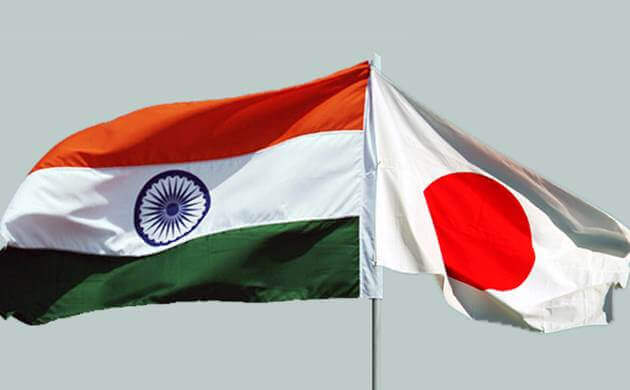As the Indian government has allowed a ‘Little Japan’ around the town of Neemrana in northern Rajasthan where about 50 Japanese companies with a workforce of more than 10,000 are located, Tokyo — India’s favorite regional capital — seems keen on reciprocity by inviting more and more skilled Indians to set up not one but many ‘Little Indias’ in Japan.
On January 18, Indian foreign secretary Harsh Vardhan Shringla and Japan’s Ambassador to India Suzuki Satoshi signed a Memorandum of Cooperation (MoC) on a Basic Framework for Partnership for Proper Operation of the System Pertaining to “Specified Skilled Worker” (SSW).
The MoC, which aims at promoting the movement of skilled workers from India to Japan, covers 14 categories of specified skills under which skilled workers from India who meet the skills requirement and Japanese language tests would be eligible for employment in Japan on a contractual basis.
The 14 specified industry fields include nursing care, building cleaning, material processing, industrial machinery manufacturing, electric and electronic information, construction, shipbuilding and ship-related industry, automobile maintenance, aviation, lodging, agriculture, fisheries, food and beverages manufacturing, and food services industry.
Japan would grant these workers the status of “specified skilled worker”.
However, the Japanese invitation to Indian skilled forces goes beyond the normal gesture. It is a necessity for the economic survival of Japan, the world’s third-largest economy.
Foreign Secretary @harshvshringla signed the Specified Skilled Workers Agreement with Ambassador Suzuki @EOJinIndia today. pic.twitter.com/Zx5qTUWi6P
— Anurag Srivastava (@MEAIndia) January 18, 2021
With a population that is aging to an unprecedented degree, Japan today has not enough workers and professionals to sustain its economy. It has the world’s highest proportion of the population that is over 65 years old. It is estimated that by 2030, one in every three people in Japan will be 65 or older, and one in five people 75-plus years old.
Japan’s Health Ministry announced not long ago that only 946,060 babies were born in Japan in 2017, the fewest births since official statistics began in 1899. The situation has not improved much since then.
With only 7.31 births/1,000 population, the total fertility rate in Japan happens to be 1.21 children per woman, among the lowest anywhere. And this entry gives a figure for the average number of children that would be born per woman if all women lived to the end of their childbearing years and bore children according to a given fertility rate at each age. But that is not exactly happening.
One of the most urbanized and highly developed countries, Japan has nearly universal family planning, with condoms and legal abortions the main forms of birth control. There are a number of factors that have contributed to the trend toward small families: high education, devotion to raising healthy children, late marriage, increased participation of women in the labor force, small living spaces, education about the problems of overpopulation, and the high costs of child education.
No wonder why Japan today is the fastest-aging society on Earth. It is the first big country in history to have started shrinking rapidly in terms of population. If the present trend continues, in the next 30 years Japan’s population, currently 125.8 million, is expected to fall to 97 million.
Given this projection, there will be economic and social spill-overs. The labor force will drop 25 percent by 2050, while the relationship between working-age Japanese (20-64) and the 65-and-over population shifts sharply. There are now two working-age Japanese for everyone 65 and over; by 2050, that ratio is projected to fall to 1.3 working-age Japanese for each elderly person.
東京オリンピックのホッケーインド代表チームのホストタウン、島根県奥出雲町の皆さんから、インド国民の健康と幸福と、インドの成功、そしてインド人ホッケー選手のオリンピックでの活躍を願う温かいメッセージが届きました。@Tokyo2020jp @GoOkuizumo https://t.co/PRUFEXpM7f @Tokyo2020hi pic.twitter.com/ESuOQWi6I7
— India in Japanインド大使館 (@IndianEmbTokyo) January 20, 2021
As it is, the increasing number of older Japanese has already put enormous pressure on the government’s budget. Since 1991, public social spending — mainly for retirement pensions, healthcare, and long-term care — has doubled as a share of gross domestic product, from 11 percent of GDP to 22 percent of GDP in 2018.
The mounting deficit spending has, in turn, ballooned Japan’s government debt to 226 percent of GDP — “the highest ever recorded in the OECD area” and roughly twice the US level.
It may be noted that after World War II, it was the combination of a fast-growing labor force and the rising productivity of its famously industrious workers that made Japan the world’s second-largest economy. But now in an aging Japan, the process is in reverse.
China has already overtaken Japan. It is feared that the working-age population will shrink so quickly that by 2050 it will be smaller than what it was in 1950.
It is not that the Japanese have been not aware of the impending crisis. In fact, the stream of business tycoons, government officials, and academicians that this writer had interacted with in Tokyo not long ago admitted the dangerous fallouts of the looming crisis, but they did not know how to change the things, with the young couples determined to continue with their existing lifestyle—work, earn and enjoy — that attaches the least importance to parenthood.

The young in the country overlook that one of the unfortunate side effects of aging in Japan is that it will be they who suffer most. Although unemployment levels may remain among the lowest in the rich world, many of the jobs will be lowly ones. Besides, those working will have to pay increasingly more taxes to meet the growing expenditure on social security for the aged (after all Japanese are also among those who live the longest, the average life-span of being 87 years).
ヴァルマ大使は、@jimin_koho本部において@Katayama_S参議の主催で開催された、デジタル人材に関連する小委員会の会議で、「インド:高度人材調達のための日本のパートナー」と題した発表を行いました。大使は??の高度人材の実力を強調し、彼らを??へ誘致するための重要な点について考えを述べました。 https://t.co/uytcDoDlAA
— India in Japanインド大使館 (@IndianEmbTokyo) January 19, 2021
It is against this background that the Japanese government’s decision to encourage the immigration of skilled manpower to maintain the socio-economic balance in the country needs to be seen.
Immigration is a hot topic in Japan’s academic and business circles. Sakanaka Hidenori, an immigration official who served in the Ministry of Justice for 35 years before retiring in 2005, has become well-known as an outspoken advocate for increased immigration.
He calls for an inflow of 10 million new immigrants by 2050. In his words, “immigrants can save Japan,” but in order to attract them, Japan must become a multi-ethnic society and “a country that gives dreams to foreigners”.
And when one talks of immigration, this writer got the distinct impression that the Japanese business leaders and academicians would love to have more and more Indians, particularly engineers in information and technology, doctors, and nurses (as care-givers to the old).
In fact, drawing from the experience of the United States, many senior executives say that if Indians could head Pepsi, Google, Microsoft, and Citi Bank in the United States, there is no reason why they should not be allowed to occupy top places in Japanese business.
Besides, the Japanese are working very hard to woo India and Indians not only owing to India’s growing economic clout of late and the skilled professionals but also due to the realization of the dangers of the China-factor. They have invested too much in China, a country the Japanese have never been comfortable with throughout history.
As it is, more than one million Chinese, including students, are already there in Japan. In sharp contrast, the Indians only number about 38,000, roughly 60 percent of them being IT professionals and their families. Whereas there are as many as 100,000 Chinese students in Japan, the total number of Indian students there is not even 2000.
However, it is also a fact that historically and culturally, the Japanese people overall are not comfortable with foreigners at all. For 90 percent of their history, they have lived isolated amongst themselves. They will definitely find it difficult to change things all of a sudden. How will they coexist with the immigrants?
From the point of view of the potential immigrants, things are not easy either. Where exactly will they live, since language is a huge barrier in Japan? What jobs would they perform? What educational opportunities would be available for their children? What medical, pension, and other social services would be made available? Would the Japanese people support such a policy?
On 20th January, three Japan Overseas Cooperation Volunteers called on the Embassy via video-link as their terms are finishing. So many stories are behind their smiles! They taught Japanese language or engaged in agricultural marketing in India. pic.twitter.com/tdZYyGWzrm
— Embassy of Japan in India (@JapaninIndia) January 20, 2021
All these are difficult questions, but questions that the likes of Sakanaka want to be solved satisfactorily. Sakanaka calls for the creation of a “multi-ethnic Japan”. He says there must be a “social revolution,” featuring a fundamental shift of the national self-image from that of a homogeneous society to one that is multi-ethnic.
“The very fundamentals of our way of life, the ethnic composition of our country, and our socio-economic system will have to be reconsidered and a new country constructed. In terms of policies towards foreign nationals; if we are to solve our demographic malaise by becoming an immigrant country we must transform Japan into a ‘country that gives dreams to foreigners’; a place where young people from around the world would aspire to migrate to.
“We must make ‘a fair society, open to the world’ that guarantees everyone a fair chance, regardless of ethnicity or nationality, and judges people by their achievements. It is an essential requirement that this society comes to value diversity more than uniformity,” he argues.
In sum, sooner than later the Japanese have to choose between a “small Japan” of a shrinking population and economic decline, and a “big Japan” of growth, immigration, and multiculturalism.
Follow EurAsian Times on Google News




